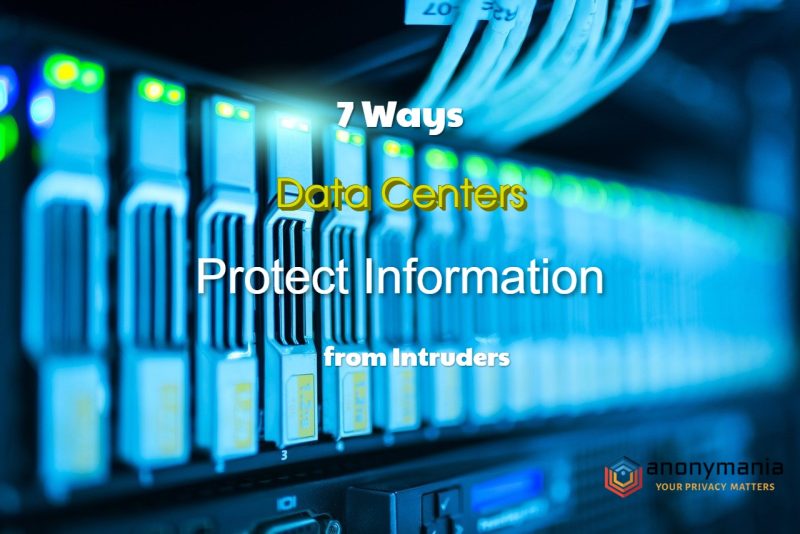7 Ways Data Centers Protect Information from Intruders


Data centers are designed with two things in mind: speed and security. Anyone that hosts content with them, from the most prominent companies to the smallest hobbyists, wants to know that their information is safe and their site has every chance of remaining online.
For this reason, both physically and virtually, data centers are among the most secure locations in the online world. Security breaches can hit any company badly. 60% of small businesses close following a cyberattack; even if their business model has nothing at all to do with security.
A web host or other data center owner that fails to protect the sites and data of their customers is likely to suffer the same fate, just more directly. Both new and existing customers will be of the opinion that if they’re unable to look after their digital property, they’ll go right ahead and find someone else.
In this feature, we want to explore exactly what data centers do to reach the great lengths they go to in order to keep information safe.
1. Increased Physical Security
Firewalls and antivirus software aren’t always enough to protect data. Indeed, that goes for online security too, but it’s particularly pertinent to the physical equivalent. Data centers are often designed from the ground up with a focus on security in mind. This means smart locks on the doors, digital visitor management systems, security cameras, and more.
These companies have a lot on the line, so they’re not just defending their premises from break-ins. The majority of cyberattacks that result in data leaks are inside jobs. While most employees try to avoid being watched like a hawk wherever possible, it is unavoidable in some industries.
Management teams behind data centers simply need to know who’s on the premises and what they’re doing at all times. If anything goes wrong, they need to know what happened, why, and who was behind it. After all, in the event of a breach, there’s a short window in which to put things right before word spreads.
2. Ethical Hacking
Data centers expect hacking attempts. These attacks are so commonplace that experts consider them a risk of doing business. As a result, some take it upon themselves to do exactly what an attacker might, but without the negative consequences that often follow, in a process known as ethical hacking.
Ethical hackers use the same tools and techniques to spot flaws and vulnerabilities as the less ethical ones. However, they prefer to report these vulnerabilities to whoever needs to know about them rather than exploit them.
Data centers use this information to ensure that whether an attack originates from the inside or outside, they can tackle those vulnerabilities and close loopholes before anyone else becomes aware of them.
3. Redundant Backups
Backups are one of those everyday security practices that should serve as a priority for any business and of any size. No network is truly invulnerable to a cyber attack, and if one leads to data loss, it’s essential to get back to business as quickly as possible.
While a regular business may keep duplicates of essential files in the cloud or on other drives separate from their network, data centers need to go a step further.
Their backup systems are often designed to mirror the primary servers in real-time. So as soon as something changes on one, it immediately reflects on the other. That’s usually in addition to scheduled backups and any further steps taken by customers.
Redundant backups are slightly different in that they’re not meant to replace the data they copy. Instead, they’re created to stop that data from failing in the first place.
If a hard drive goes down, others kick in automatically. To the outside world, it appears that nothing has changed. However, data center managers keep a close eye on this hardware to ensure that they can deal with any failures swiftly to ensure redundancy continues.
4. Improved Employee Training
Nothing beats human error for the causes behind successful phishing attacks. As a result, many businesses have created policies and guidelines alongside beefing up their digital security. They’re designed to ensure that even the most tech-illiterate team members have an idea of warning signs and things they shouldn’t do.
This brings us back to just how crucial security is at data centers. Just as with backups, they have to go further than most to ensure that anyone that operates within the data center knows all about threat identification and mitigation.
Fortunately, they have a head start on businesses from other sectors, as their employees are often tech-savvy by default. They also have a pre-existing interest in network hardware and presumably the security issues that play a significant part.
With that said, some data centers even go as far as educating admin staff, cleaners, and other non-specialists, so they have as many eyes on an issue as possible should one arise. As long as lessons are learned, all businesses have a better chance of staying ahead.
5. Regular Updates and Patches
Day-zero exploits are at an all-time and rising all the time. With more apps than ever before, and most people having multiple devices on which to run them, flaws are found and exploited quickly enough to make them dangerous.


Data centers run on software, too, of course, and most use third-party supplies instead of their own bespoke designs. Network software is highly targetable. Bots and humans alike are always on the lookout for opportunities to make it do something it shouldn’t.
One of the difficulties many businesses face with software exploits is that deploying that fix across the organization can be costly and time-consuming.
In addition, some major businesses and government organizations still run on old versions of Windows because crucial software won’t work on anything newer.
There is no fix for zero-day exploits by definition. It requires a manual action to close the gap once one becomes available. Many businesses don’t prioritize software updates, but the same cannot be said of data centers.
The software can generally do everything it needs to straight out of the box in the networking world. Patches and updates are rarely for new features and cosmetic improvements. Instead, they’re deployed almost exclusively with security in mind.
As such, data center operators go out of their way to ensure everything their systems and servers rely on to operate correctly and securely receives the latest updates promptly. Passwords alone won’t provide much defense against attacks if the underlying software isn’t also secure.
6. Regular Risk Assessments
Once again, risk assessments are nothing new in the business world and are by no means exclusive to data centers alone. However, online security is an ever-evolving threat and something, somewhere, changes virtually every day.
It could be a new software flaw or failed hard drive. It may be a brand new threat that could knock out several massive sites for hours on end.
Essentially, whatever measures a business that relies on online security puts in place one day are unlikely to be genuinely current a week later.
However, as threats evolve, so do defenses. So data centers make a point of regularly assessing potential negative impacts on their businesses.
Larger operators have entire security teams dedicated to ensuring that nobody who shouldn’t be able to can access their premises; either physically or via their network.
This always makes life harder for attackers who aren’t necessarily on the cutting edge of new tools.
7. Digital Security Layers
While we’ve referred to antivirus software and firewalls in passing, no coverage of standard security measures within data centers would be complete without discussing the various layers that make up their defenses.
Rest assured, they go far beyond what most people think of when they consider firewalls.
They often initially operate on a prevention and detection system. They put physical and virtual barriers in place to keep people out as best they can.
Most attackers will have no chance of breaching the initial defenses of these highly sophisticated systems. However, if someone manages to do just that, they need to know about it as quickly as possible.
Data centers employ real-time monitoring, using a baseline of typical system usage and flagging any anomalies. This technology advances quickly.
Many suppliers have taken to using machine learning and artificial intelligence to reinforce their reporting systems.
The next layer involves dealing with any detected threats. Automation can take care of some intrusions, while others require human intervention. It could be as simple as quarantining a specific file or temporarily pulling a server from the network.
On the other hand, it might require a site-wide shut down to prevent further infection. The vital considerations for data center operators are knowing what to expect and understanding what action to take should the worst happen.
Data Center Security – In Summary
Cybersecurity is at the forefront of considerations for any business with an online presence. Even if they have nothing more than an email address, they need to think about how losing that address or the data contained therein would impact their business.
As providers of web hosting, cloud storage, and other facilities, data centers take these protections to the next level. Part of their business description involves sitting at the cutting edge of data protection, accounting for threats from people, natural disasters, hackers, and anyone else that might compromise their service provision.
Data centers rank among the most secure locations around, and for a good reason. As a result, they’re no easy target for potential attackers. At the same time, it’s vital to select a data center that takes storage as seriously as they do for those who value security and uptime.



